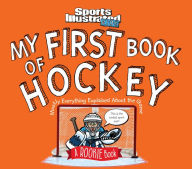
Taking Action for Civil and Political Rights (Who’s Changing the World?)
by Eric Braun (Author)
Booktalk: Do you ever worry about people being treated unfairly? Do you wish you could help make things better? The civil rights activists profiled in this book do that every day. One teenager organized a hunger strike and a protest of 120,000 people to demand voting rights. Three friends started the Black Lives Matter movement by commenting on social media. Another activist started a petition that asked teen magazines to stop altering photos of girls’ bodies. And a farmworker organized other farmworkers and consumers to ask for higher wages and better working conditions. Explore the stories of these inspiring kids and adults, and learn how to start making a difference yourself.
Snippet:
LENNOX YEARWOOD JR.
HIP-HOP VOTING ACTIVIST
Political candidates and advocacy have long worked hard to get young adults to vote. They know that young voters can be the key to winning elections. But many get-out-the-vote efforts focus on college students and young professionals.
That’s where the Reverend Lennox Yearwood Jr. comes in. He’s the founder and CEO of a group called the Hip Hop Caucus, an organization that promotes political activism among US voters using hip-hop music and culture.
It’s Nonfiction Monday!
Copyright © 2016 Anastasia Suen All Rights Reserved.










 The best thing about this book is that Ms. Fleming acknowledges right from the beginning that Buffalo Bill’s treatment of Native Americans, as well the language used for and treatment of Native Americans during his life, is problematic. She also mentions that while the entire concept of the Wild West is also problematic, it was very important to many US citizens and persists in our culture.
The best thing about this book is that Ms. Fleming acknowledges right from the beginning that Buffalo Bill’s treatment of Native Americans, as well the language used for and treatment of Native Americans during his life, is problematic. She also mentions that while the entire concept of the Wild West is also problematic, it was very important to many US citizens and persists in our culture.


